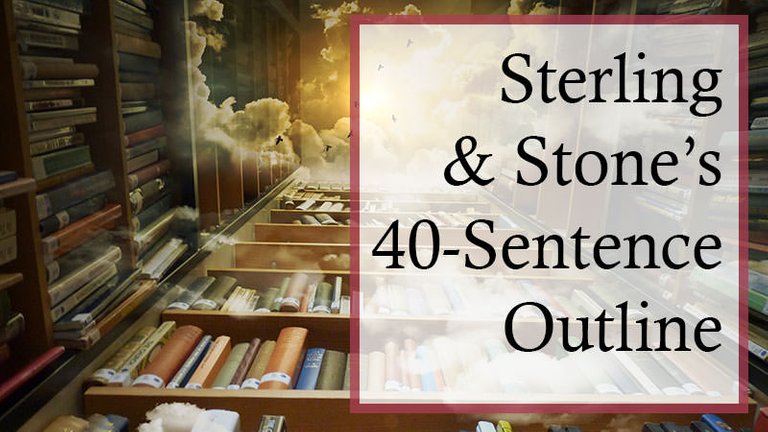
A couple of weeks ago, one of my best friends attended a writer's conference in Austin.
Her name is Lynn Bonnie Johnston, and she's not just a fiction writer who's been writing for more than 17 years.
She's a writing coach, and she has a brilliant analytic mind. Every time she reads a book about writing fiction, she analyzes what she's learned, use the methods herself, and then often tweak them.
Now, during that conference in Austin, Sterling & Stone were on the stage and talked about their 40-sentence outline. They use it for all their best-selling fiction.
Naturally, the audience asked for examples, but the problem was that once they'd made their 40-sentence outline, they would add more to it, and the 40-sentences ended up completely different with a lot more text.
Bonnie understood what they did, though, and created something better than an example to learn from.
She created a template that everyone can use to come up with their own 40-sentence outlines and start writing.
And then Sterling & Stone did a live video with Bonnie, talking about how to use the template.
They shared both items with their list, and I asked Bonnie if it was okay to share with others, and she said yes.
So here you are - the 40-sentence outline template by Bonnie Johnston
And the video by Johnny B. Truant, Sean Platt, and Bonnie Johnston that goes with it.
Wow. I love the work put out by Bonnie Johnston, and try to learn from her as much as I can. Although, as with a lot of other artists, I recoil against anything formulaic, I do still like the ideas of using "formulas" as a guideline.
Exactly, and Bonnie says again and again that the formula can be used as a guideline, but if the writer thinks another order or similar is more fitting, then change the order.
I like the fact that they've drawn up an actual outline of what they were presenting. Most people's theories are exactly just that, theories. Failing to explain and giving practical examples is where the theory falls apart.
True. And I know that it's a thing I need in order to understand things. I need the theory, and then to see examples. Sometimes lots of examples before I get it. Then I need to try it out myself, and that's when I found out how much I didn't understand. :D